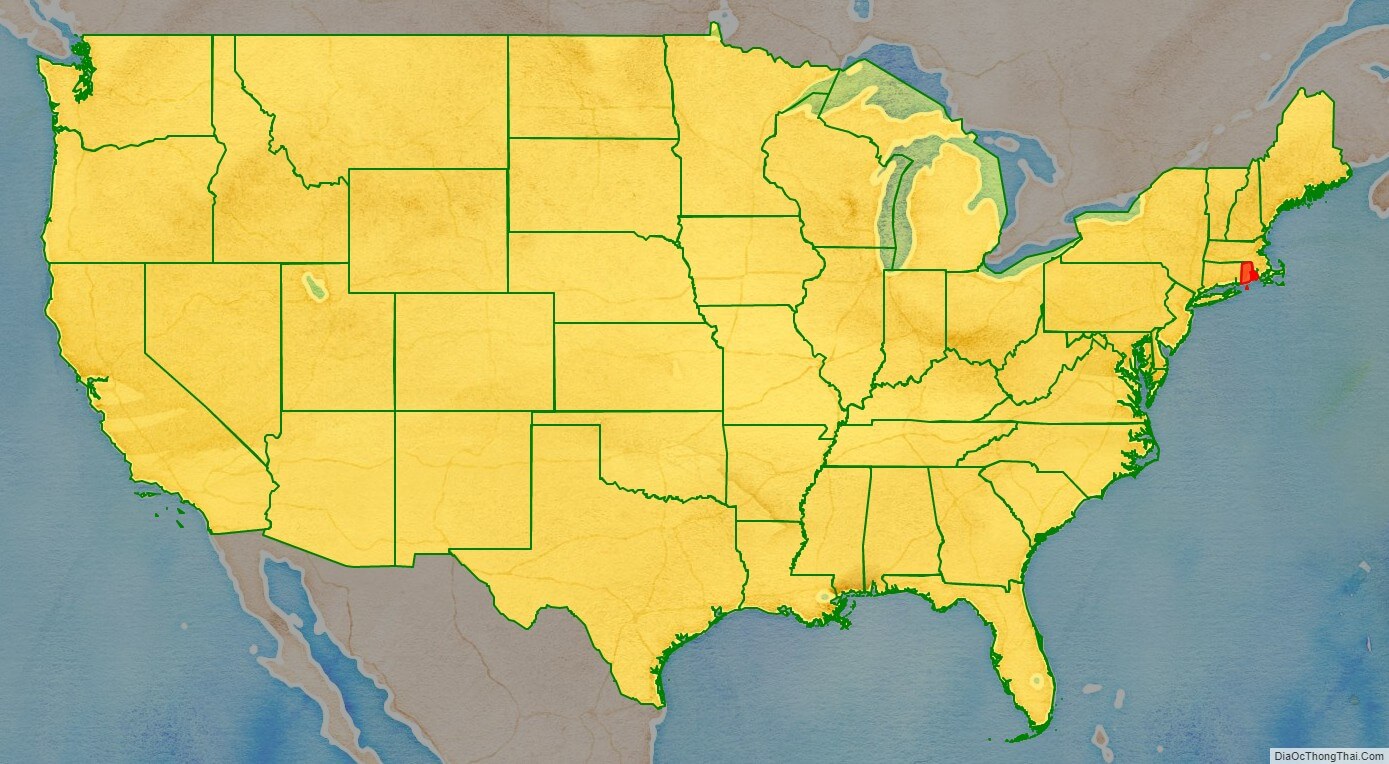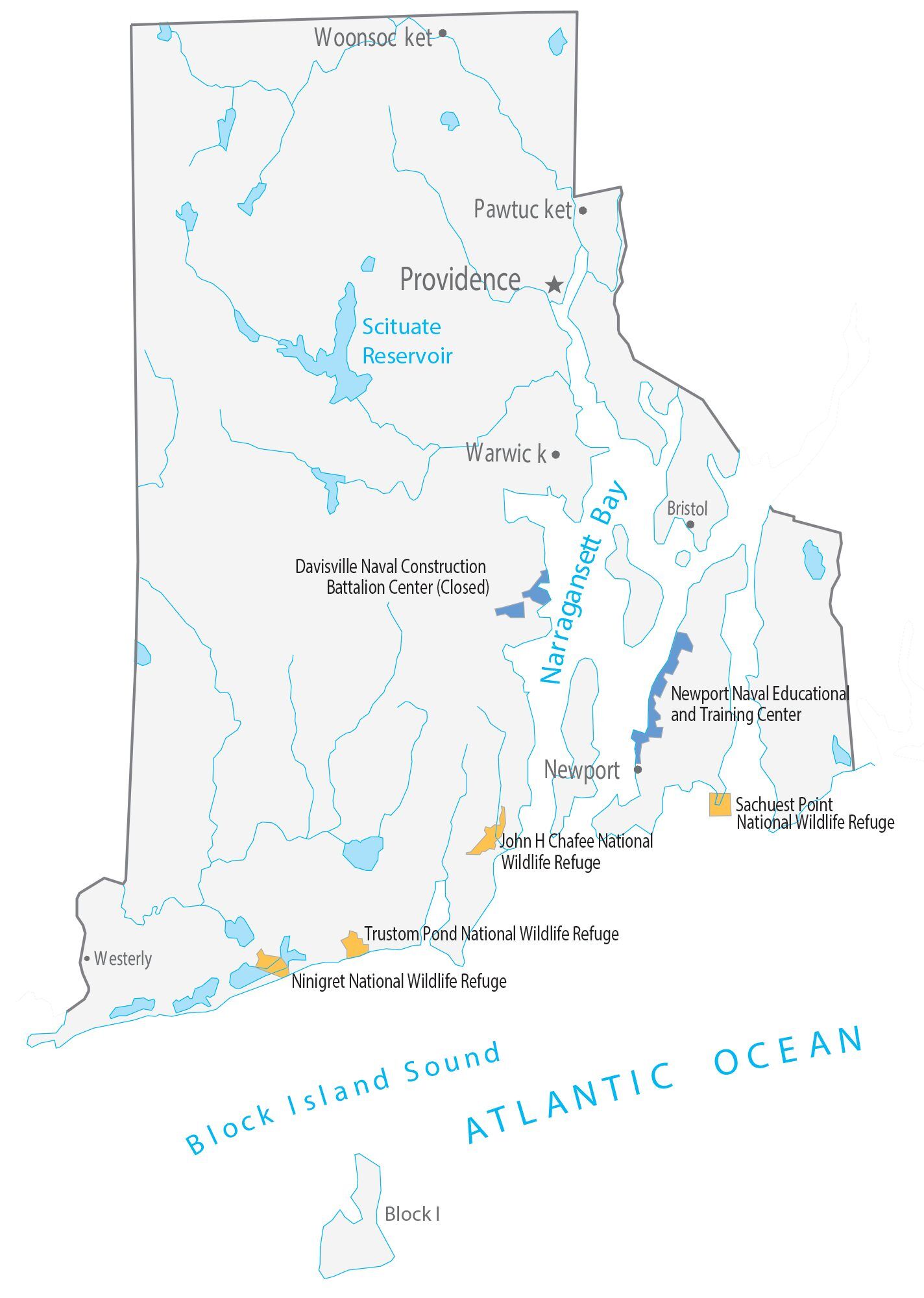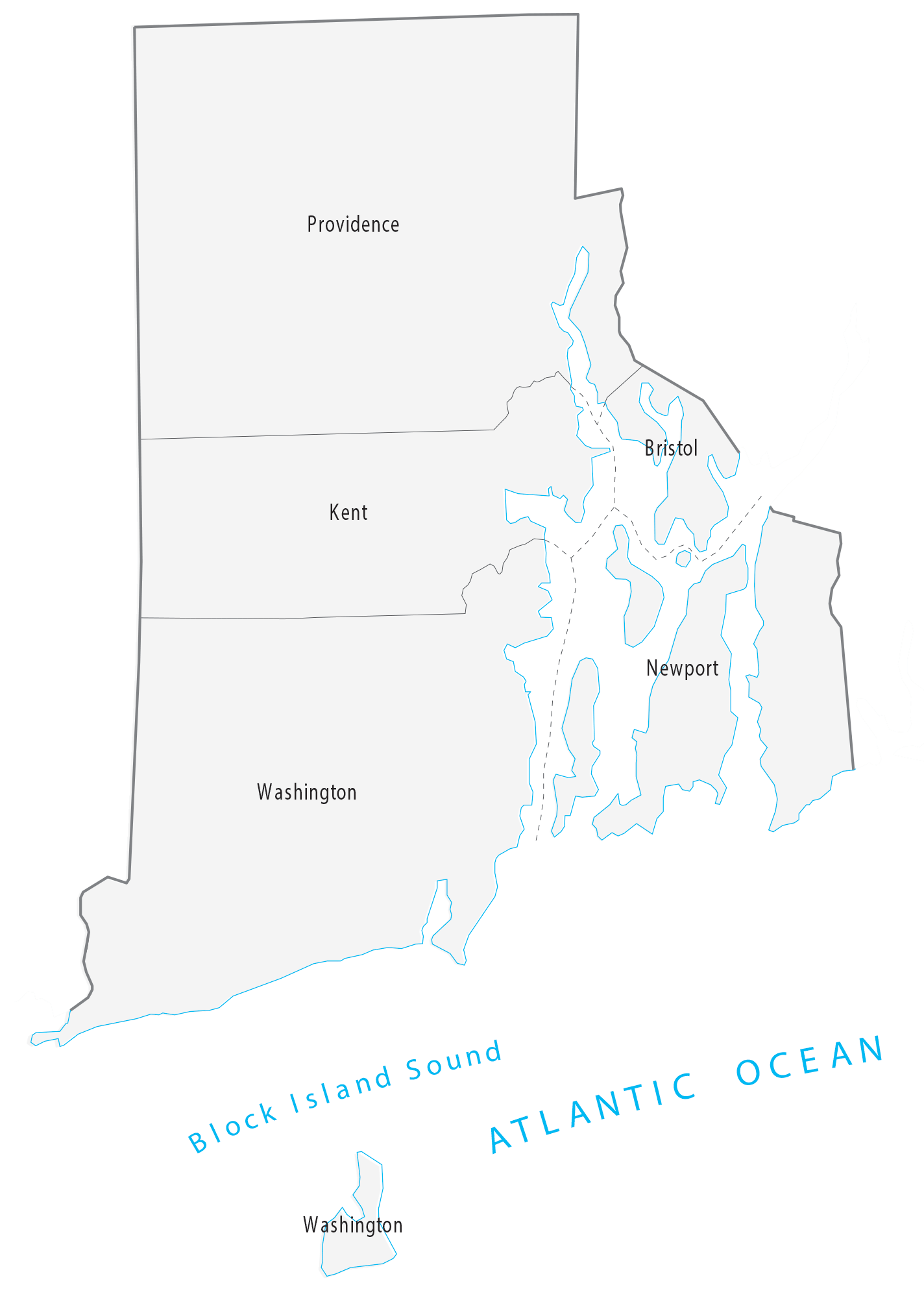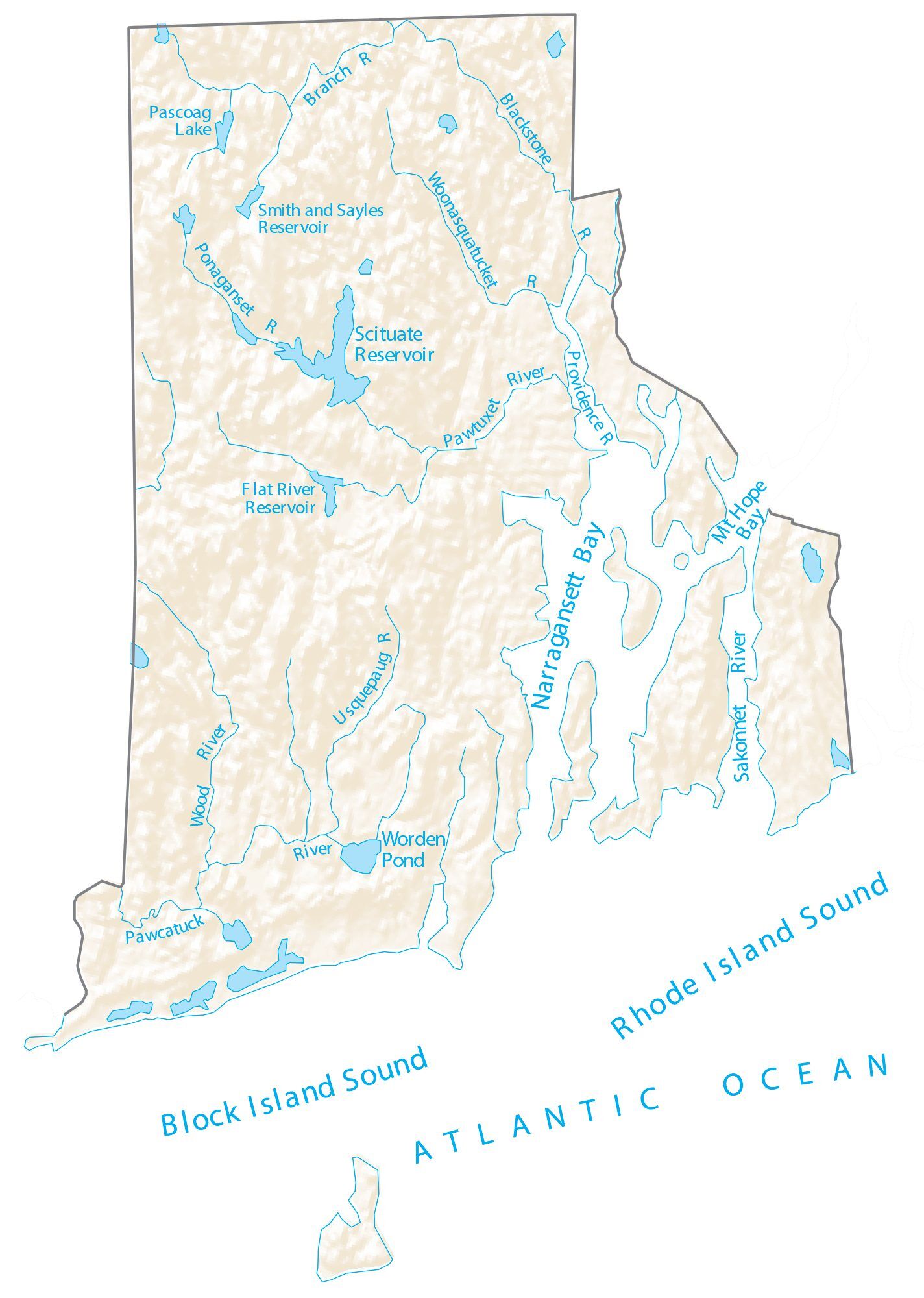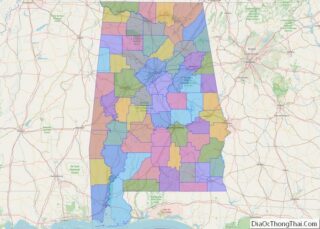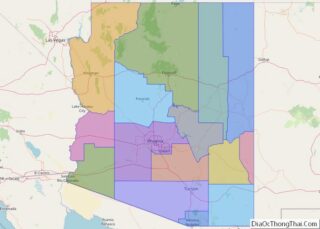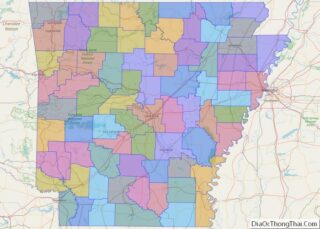Rhode Island (/ˌroʊd -/ (listen), like road) is a state in the New England region of the Northeastern United States. It is the smallest U.S. state by area and the seventh-least populous, with slightly less than 1.1 million residents as of 2020; but Rhode Island has grown at every decennial count since 1790 and is the second-most densely populated state, after New Jersey. The state takes its name from the eponymous island, though nearly all of its land area is on the mainland. Rhode Island borders Connecticut to its west; Massachusetts to its north and east; and the Atlantic Ocean to its south via Rhode Island Sound and Block Island Sound; and shares a small maritime border with New York, east of Long Island. Providence is its capital and most populous city.
Native Americans lived around Narragansett Bay for thousands of years before English settlers began arriving in the early 17th century. Rhode Island was unique among the Thirteen British Colonies in having been founded by a refugee, Roger Williams, who fled religious persecution in the Massachusetts Bay Colony to establish a haven for religious liberty. He founded Providence in 1636 on land purchased from local tribes, thereby creating the first settlement in North America with an explicitly secular government. The Colony of Rhode Island and Providence Plantations subsequently became a destination for religious and political dissenters and social outcasts, earning it the moniker “Rogue’s Island”.
Rhode Island was the first colony to call for a Continental Congress, which it did in 1774, and the first to renounce its allegiance to the British Crown, which it did on May 4, 1776. After the American Revolution, during which it was heavily occupied and contested, Rhode Island became the fourth state to ratify the Articles of Confederation, which it did on February 9, 1778. Because its citizens favored a weaker central government, it boycotted the 1787 convention that had drafted the United States Constitution, which it initially refused to ratify; it finally did ratify it on May 29, 1790, the last of the original 13 states to do so.
It had been officially named the State of Rhode Island and Providence Plantations since the colonial era, but came to be commonly known as “Rhode Island”. In November 2020, the state’s voters approved an amendment to the state constitution formally dropping “and Providence Plantations” from its full name. Its official nickname is the “Ocean State”, a reference to its 400 miles (640 km) of coastline and the large bays and inlets that make up about 14% of its total area.
| Before statehood: | Colony of Rhode Island and Providence Plantations |
|---|---|
| Admitted to the Union: | May 29, 1790 (13th) |
| Capital: | Providence |
| Capital – largest city: | largest city |
| Largest metro and urban areas: | Greater Boston (combined) Providence (metro and urban) |
| Elevation: | 200 ft (60 m) |
| Total Area: | 1,545 sq mi (4,001 km) |
| Area Rank: | 50th |
| Total Population: | 1,098,163 |
| Population Rank: | 45th |
| Population Density: | 1,006/sq mi (388/km) |
| Population Density Rank: | 2nd |
| Median Household Income: | $63,870 |
| Income Rank: | 15th |
| Demonym(s): | Rhode Islander |
| USPS abbreviation: | RI |
| ISO 3166 code: | US-RI |
| Website: | www.ri.gov |
Online Interactive Map
Click on ![]() to view map in "full screen" mode.
to view map in "full screen" mode.
Rhode Island location map. Where is Rhode Island state?
Rhode Island Road Map
Rhode Island Map – Roads & Cities
Rhode Island Street Map
Rhode Island State Map – Places and Landmarks
Rhode Island Political Map
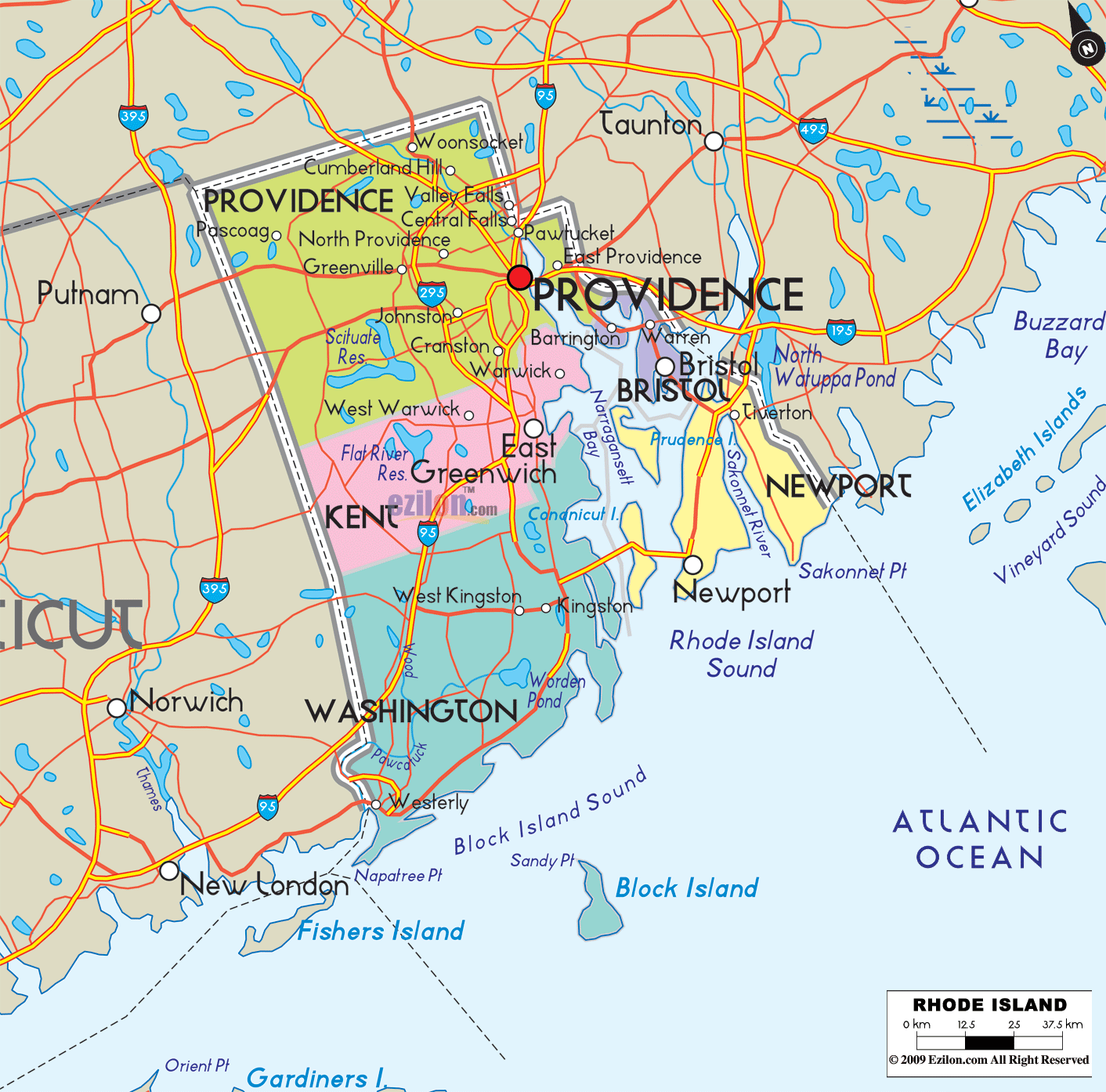
Rhode Island Lakes and Rivers Map
Geography
Rhode Island covers an area of 1,214 square miles (3,144 km) within the New England region of the Northeastern United States and is bordered on the north and east by Massachusetts, on the west by Connecticut, and on the south by Rhode Island Sound and the Atlantic Ocean. It shares a narrow maritime border with New York State between Block Island and Long Island. The state’s mean elevation is 200 feet (61 m). It is only 37 miles (60 km) wide and 48 miles (77 km) long, yet the state has a tidal shoreline on Narragansett Bay and the Atlantic Ocean of 384 miles (618 km).
Rhode Island is nicknamed the Ocean State and has a number of oceanfront beaches. It is mostly flat with no real mountains, and the state’s highest natural point is Jerimoth Hill, 812 feet (247 m) above sea level. The state has two distinct natural regions. Eastern Rhode Island contains the lowlands of the Narragansett Bay, while Western Rhode Island forms part of the New England upland. Rhode Island’s forests are part of the Northeastern coastal forests ecoregion.
Narragansett Bay is a major feature of the state’s topography. There are more than 30 islands within the bay; the largest is Aquidneck Island, which holds the municipalities of Newport, Middletown, and Portsmouth. The second-largest island is Conanicut, and the third is Prudence. Block Island lies about 12 miles (19 km) off the southern coast of the mainland and separates Block Island Sound and the Atlantic Ocean proper.
A rare type of rock called Cumberlandite is found only in Rhode Island (specifically, in the town of Cumberland) and is the state rock. There were initially two known deposits of the mineral, but it is an ore of iron, and one of the deposits was extensively mined for its ferrous content.
- Geography of Rhode Island
Map of Rhode Island, showing major cities and roads
Rocky shoreline in Newport
Ninigret Pond National Wildlife Refuge
Forest along the Blackstone River
Trustom Pond, a lagoon in South Kingstown
Climate
Most of Rhode Island has a humid continental climate, with warm summers and cold winters. The state’s southern coastal portions are the broad transition zone into subtropical climates, with hot summers and cool winters with a mix of rain and snow. Block Island has an oceanic climate. The highest temperature recorded in Rhode Island was 104 °F (40 °C), recorded on August 2, 1975, in Providence. The lowest recorded temperature in Rhode Island was −23 °F (−31 °C) on February 5, 1996, in Greene. Monthly average temperatures range from a high of 83 °F (28 °C) to a low of 20 °F (−7 °C).
Rhode Island is vulnerable to tropical storms and hurricanes due to its location in New England, catching the brunt of many storms that blow up the eastern seaboard. Hurricanes that have done significant damage in the state include the 1938 New England hurricane, Hurricane Carol (1954), Hurricane Donna (1960), and Hurricane Bob (1991).
Cities and towns
Rhode Island is divided into five counties but it has no county governments. The entire state is divided into municipalities, which handle all local government affairs.
There are 39 cities and towns in Rhode Island. Major population centers today result from historical factors; development took place predominantly along the Blackstone, Seekonk, and Providence Rivers with the advent of the water-powered mill. Providence is the base of a large metropolitan area.
The state’s 19 largest municipalities ranked by population are :
- Providence (190,934)
- Cranston (82,934)
- Warwick (82,823)
- Pawtucket (75,604)
- East Providence (47,139)
- Woonsocket (43,240)
- Cumberland (36,405)
- Coventry (35,688)
- North Providence (34,114)
- South Kingstown (31,931)
- West Warwick (31,012)
- Johnston (29,568)
- North Kingstown (27,732)
- Newport (25,163)
- Westerly (23,359)
- Central Falls (22,583)
- Lincoln (22,529)
- Bristol (22,493)
- Smithfield (22,118)
Some of Rhode Island’s cities and towns are further partitioned into villages, in common with many other New England states. Notable villages include Kingston in the town of South Kingstown, which houses the University of Rhode Island; Wickford in the town of North Kingstown, the site of an annual international art festival; and Wakefield where the Town Hall is for the Town of South Kingstown.
- Major cities of Rhode Island
1. Providence
2. Warwick
3. Cranston
4. Pawtucket
6. Woonsocket
7. Coventry
8. Cumberland
9. North Providence
10. South Kingstown
11. Johnston
12. West Warwick
13. North Kingstown
14. Newport
15. Westerly
Rhode Island Physical Map
Rhode Island Topographic Map
Rhode Island Satellite Map
Others printable maps
Rhode Island Outline Map
Blank Rhode Island County Map
See also
Map of Rhode Island State and its subdivision: Map of other states:- Alabama
- Alaska
- Arizona
- Arkansas
- California
- Colorado
- Connecticut
- Delaware
- District of Columbia
- Florida
- Georgia
- Hawaii
- Idaho
- Illinois
- Indiana
- Iowa
- Kansas
- Kentucky
- Louisiana
- Maine
- Maryland
- Massachusetts
- Michigan
- Minnesota
- Mississippi
- Missouri
- Montana
- Nebraska
- Nevada
- New Hampshire
- New Jersey
- New Mexico
- New York
- North Carolina
- North Dakota
- Ohio
- Oklahoma
- Oregon
- Pennsylvania
- Rhode Island
- South Carolina
- South Dakota
- Tennessee
- Texas
- Utah
- Vermont
- Virginia
- Washington
- West Virginia
- Wisconsin
- Wyoming
